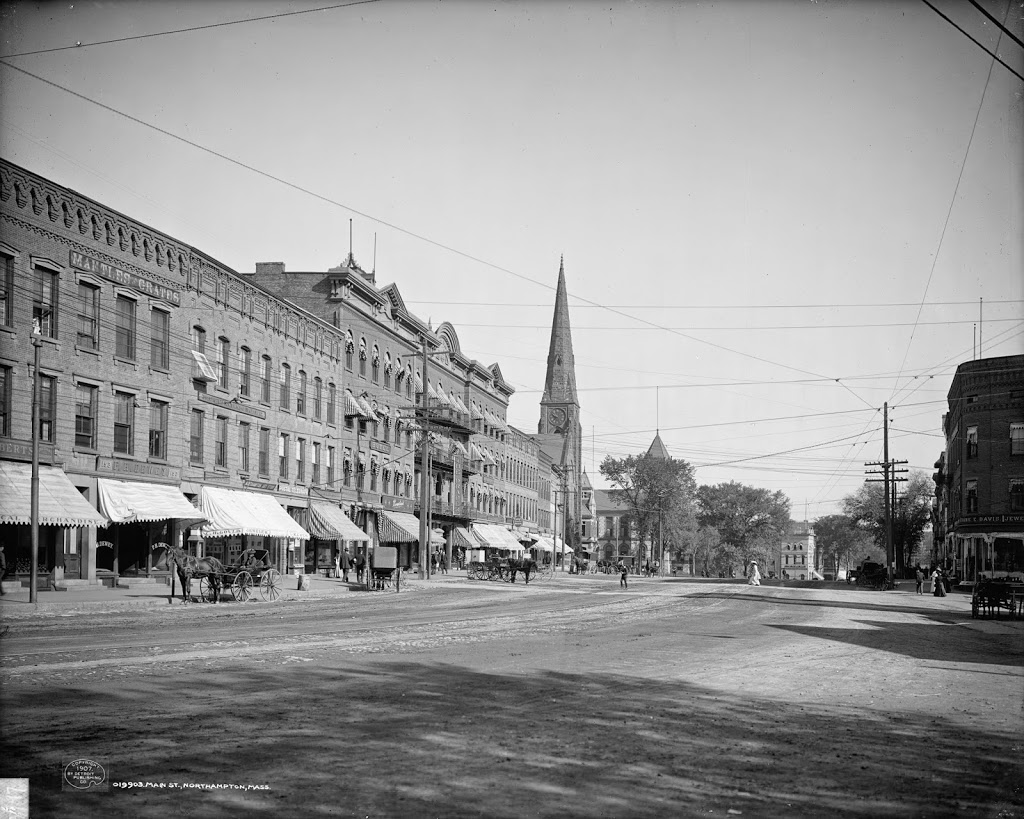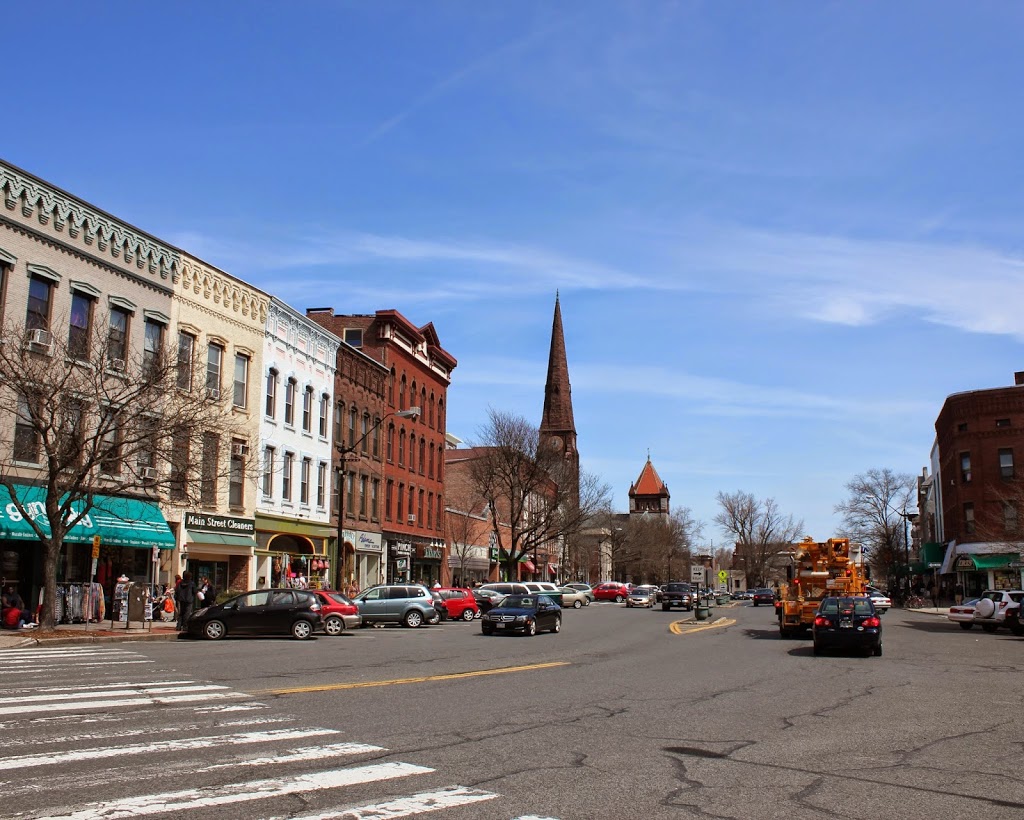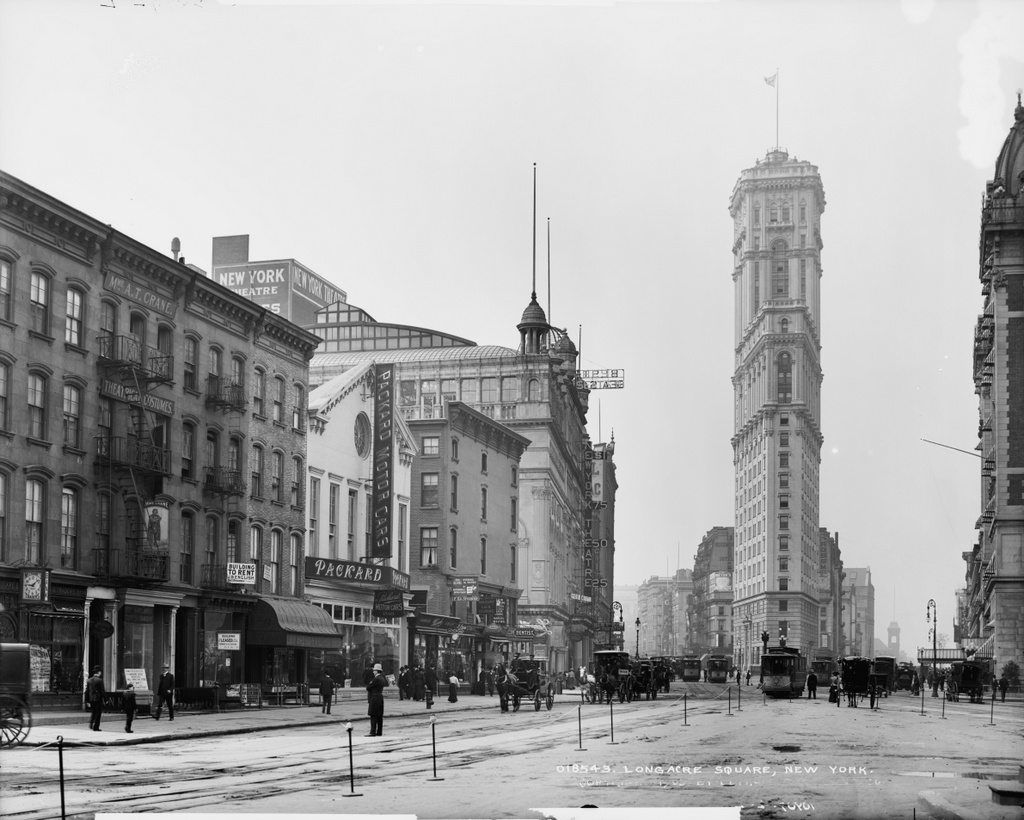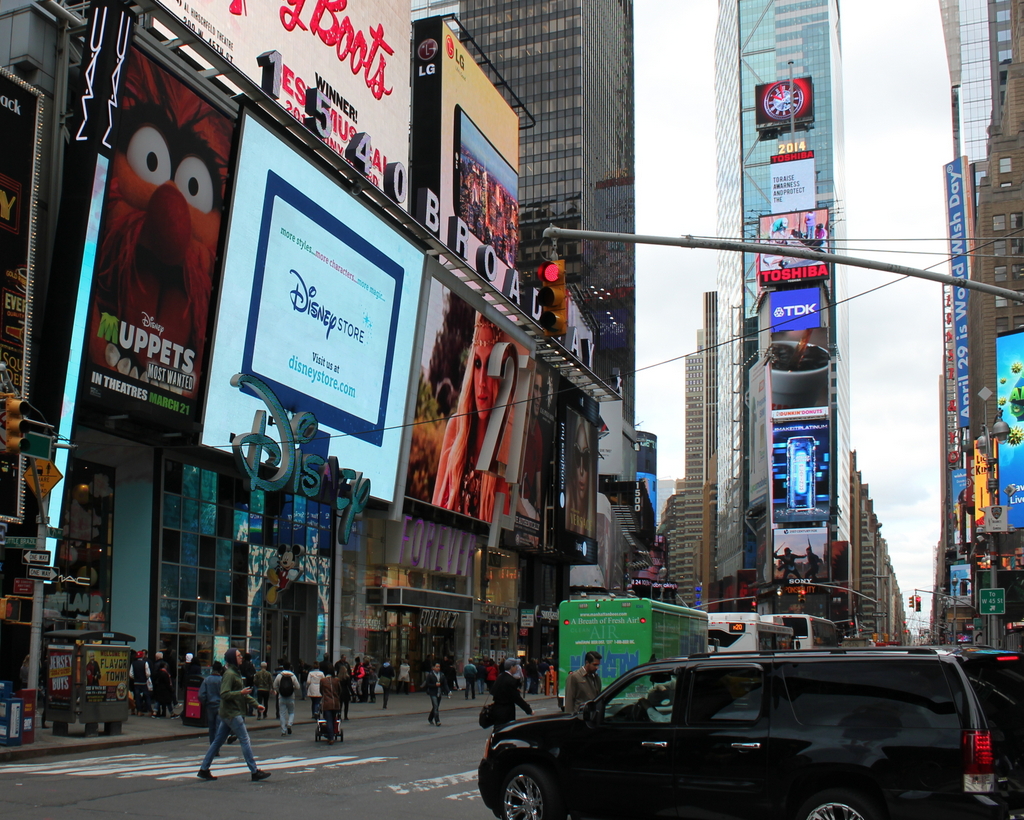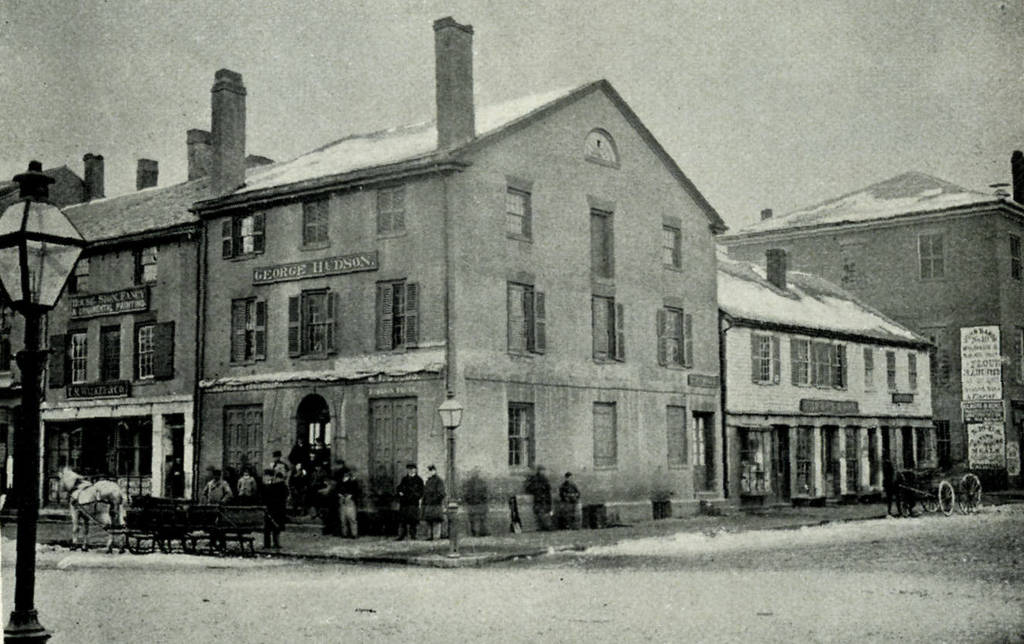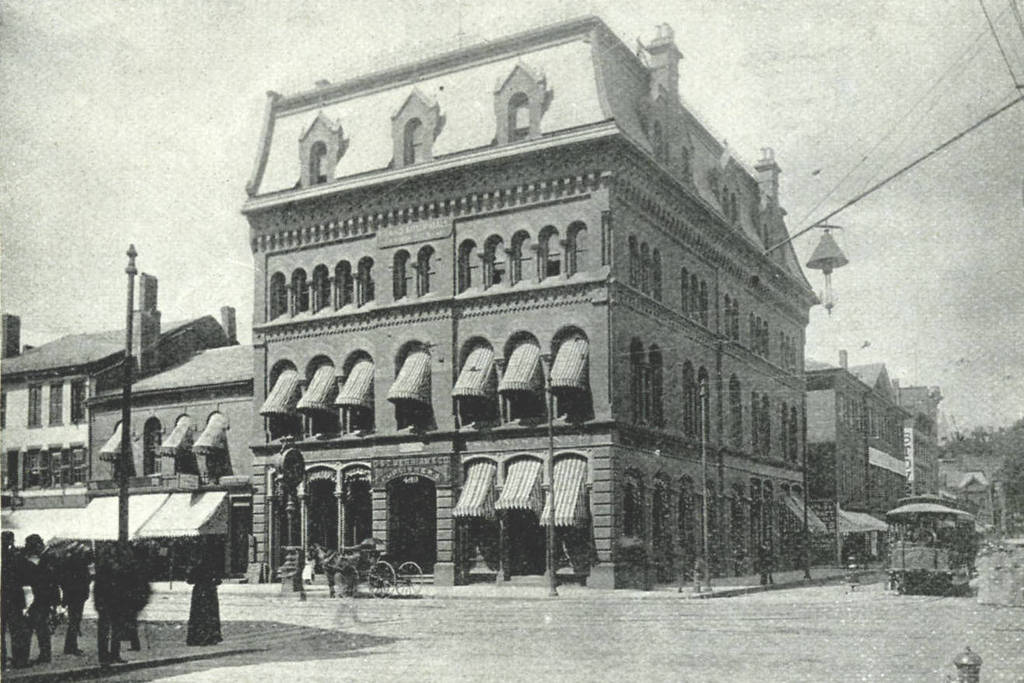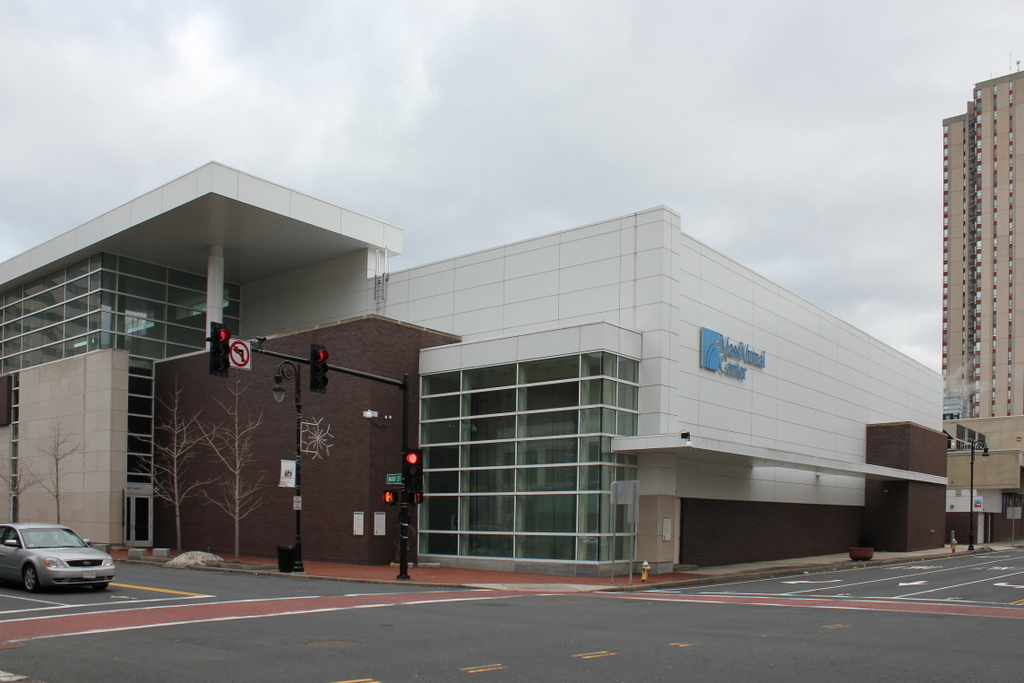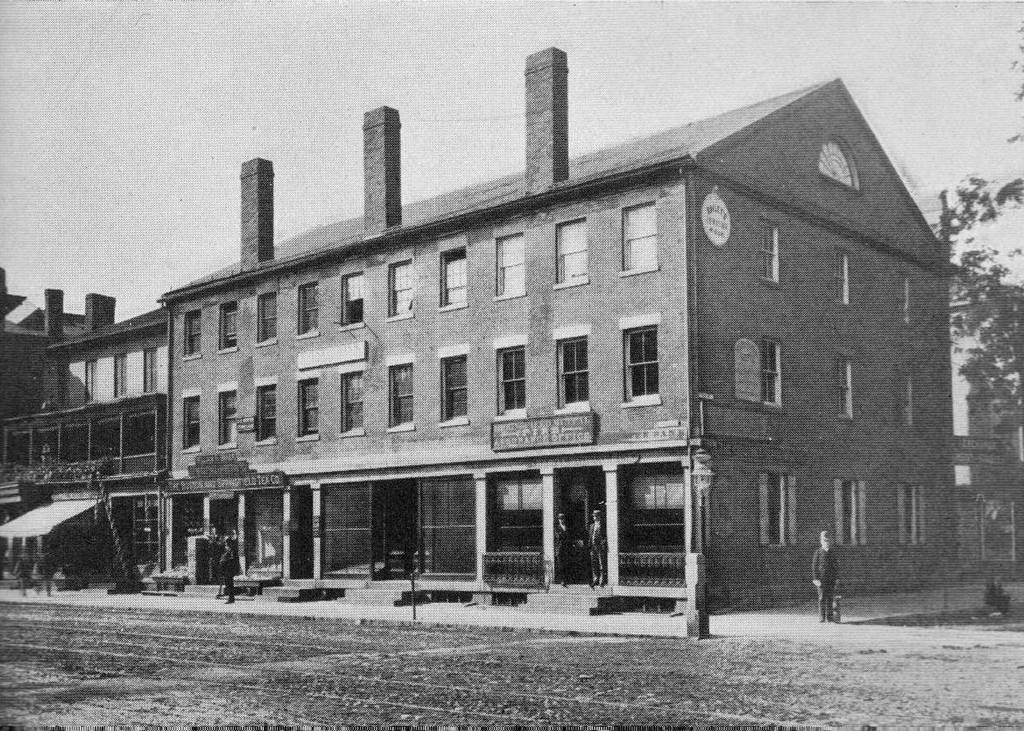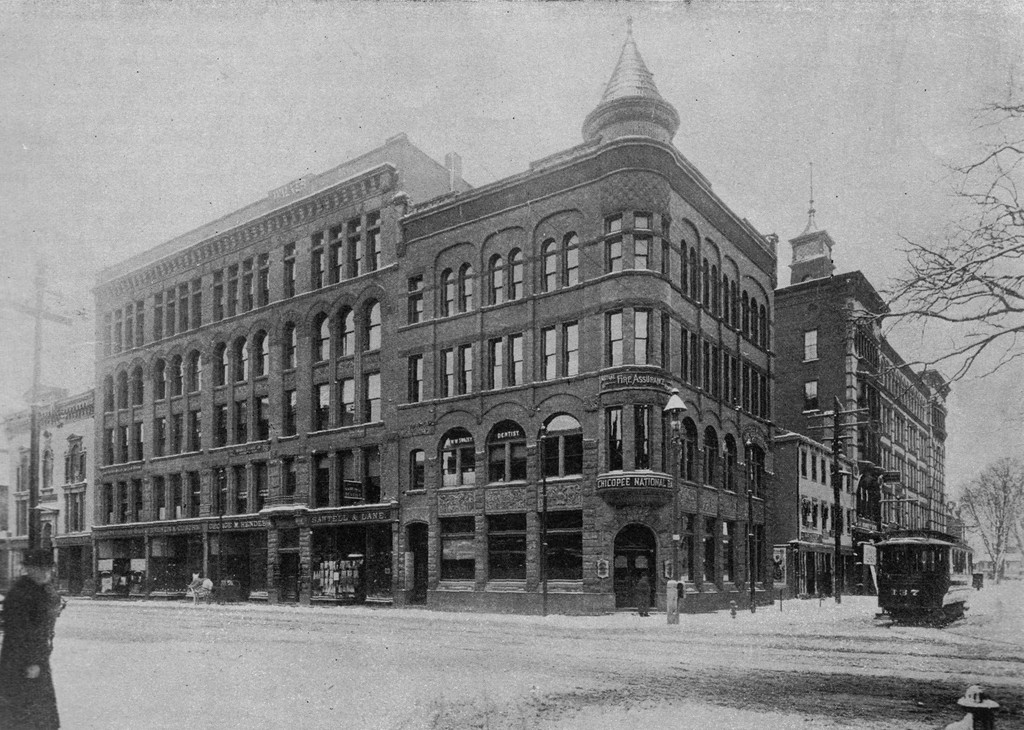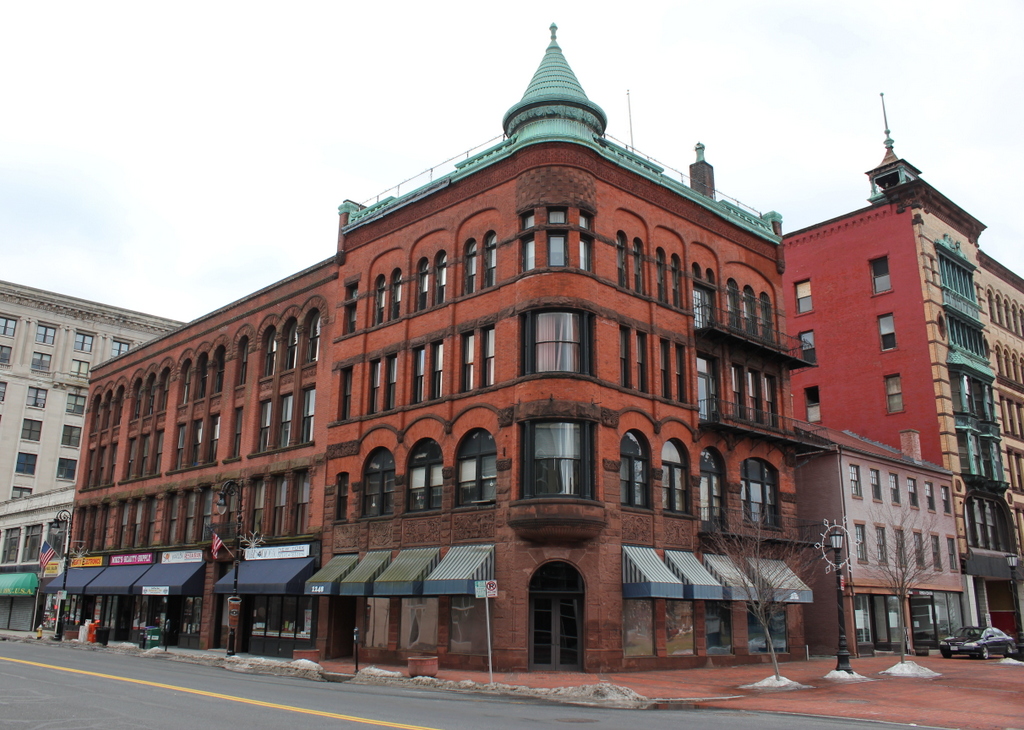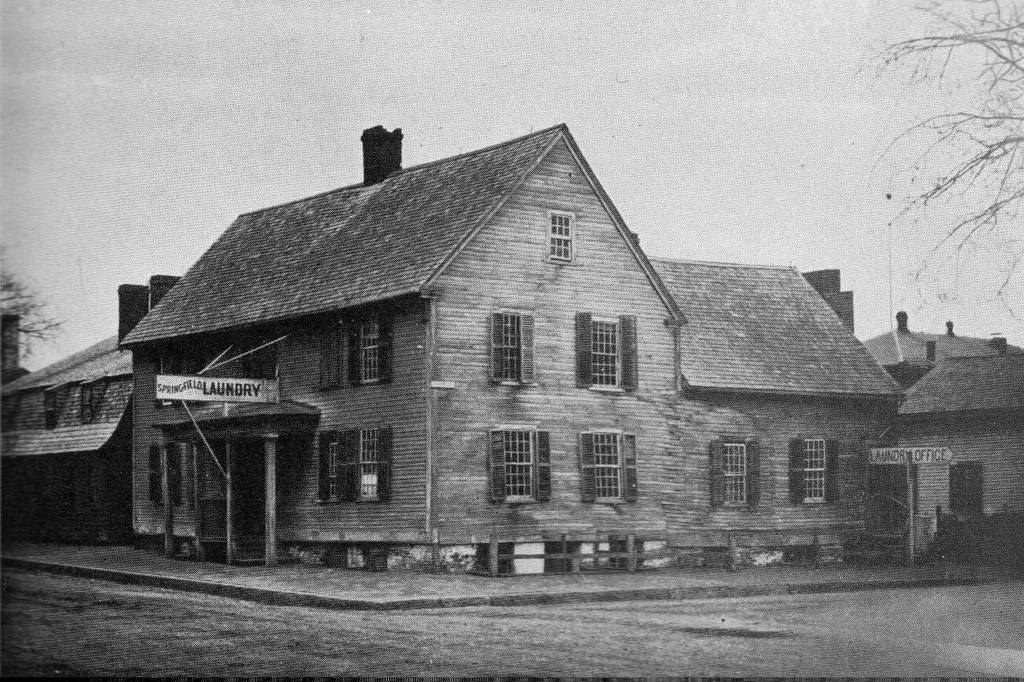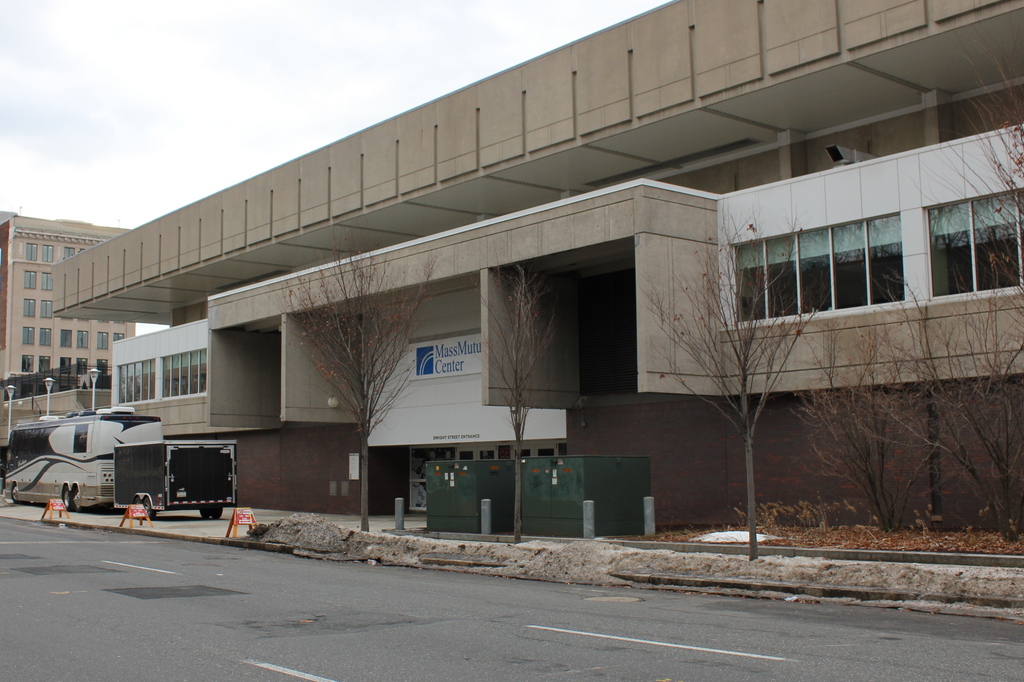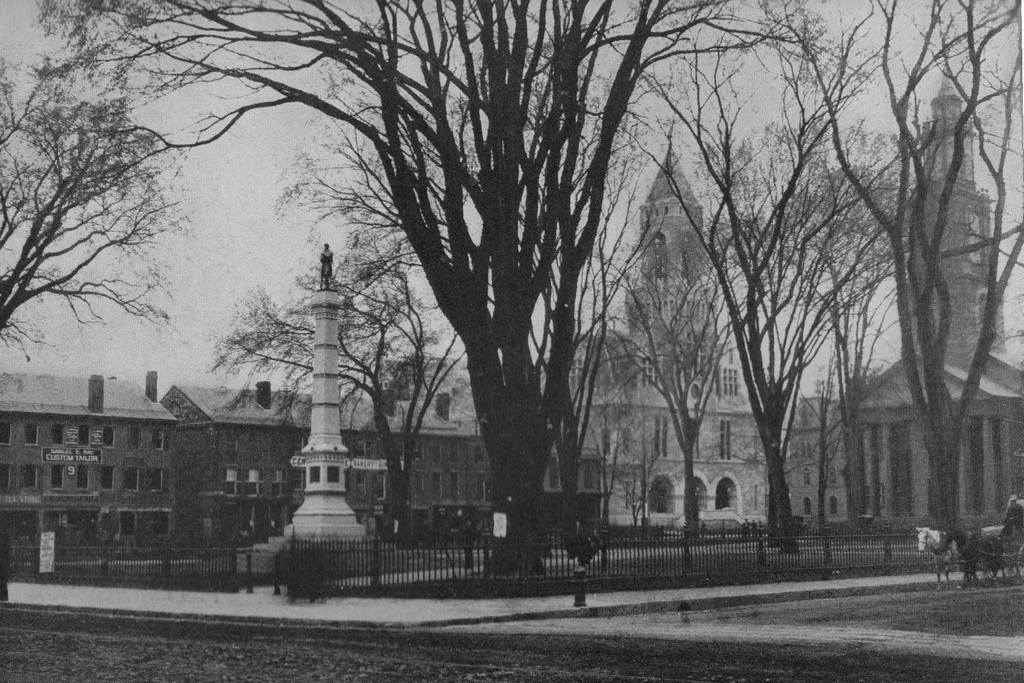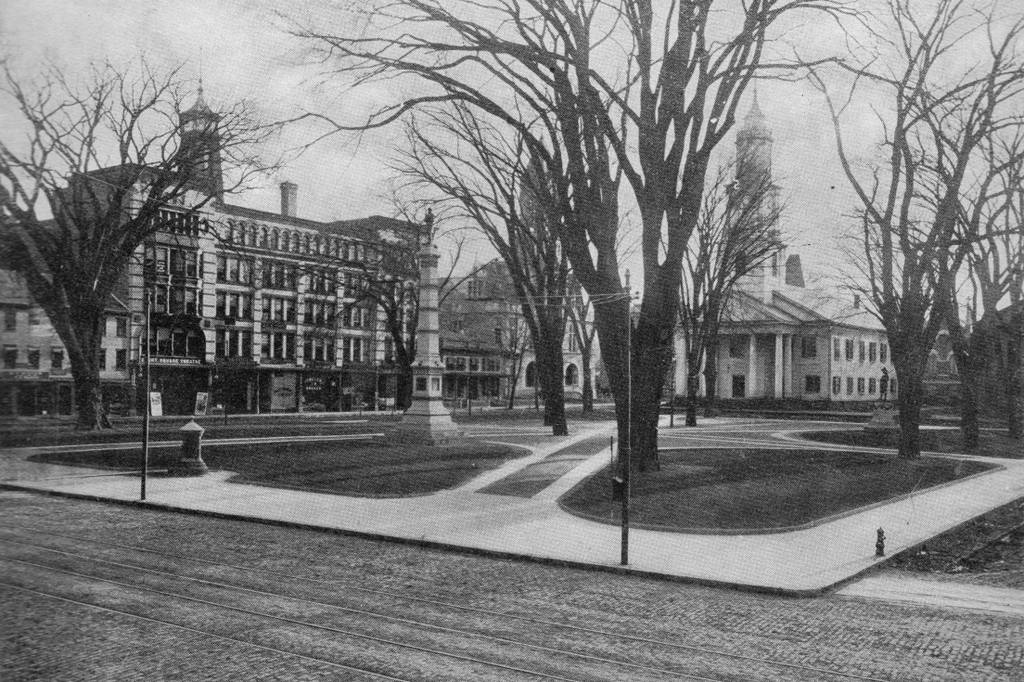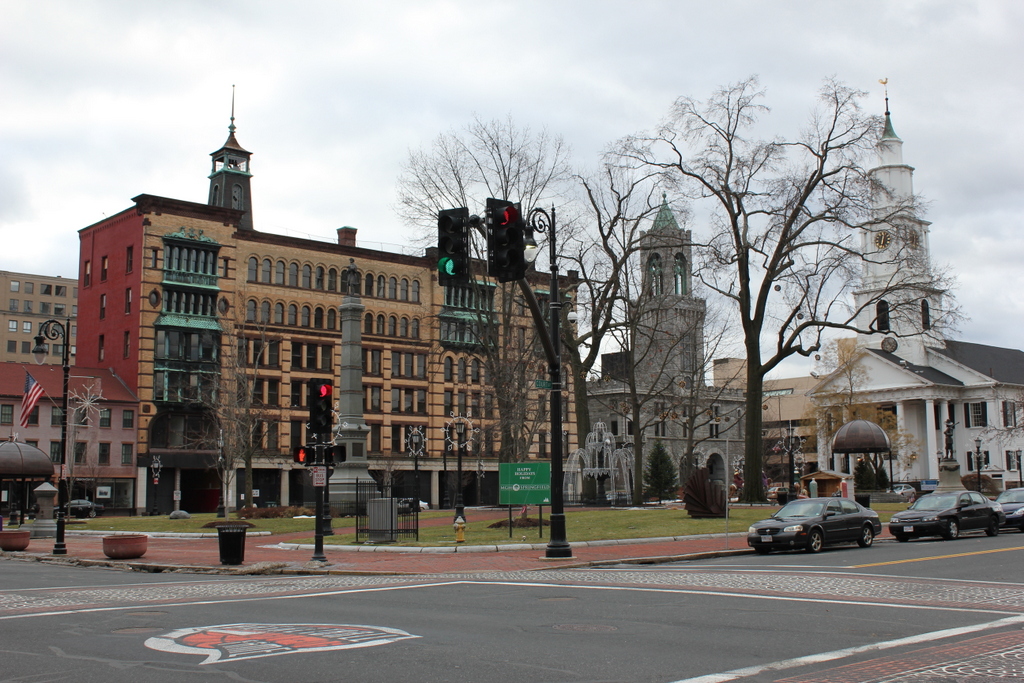Main Street in Northampton, looking east from in front of City Hall, around 1907. Image courtesy of the Library of Congress, Detroit Publishing Company Collection.
The same view in 2014:
From this angle, downtown Northampton appears virtually unchanged in over a century. The first photo is the view that then-state representative Calvin Coolidge would’ve seen as he walked out of City Hall and headed towards his law office. Within a few years, he would become mayor of Northampton, and from there he quickly moved up the political ranks.

